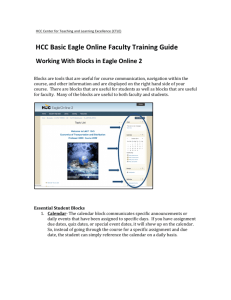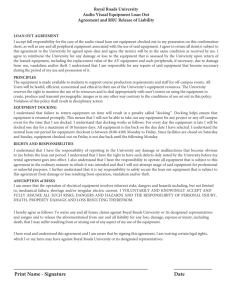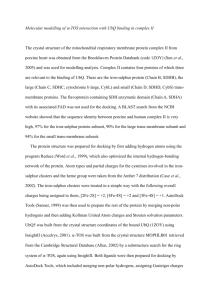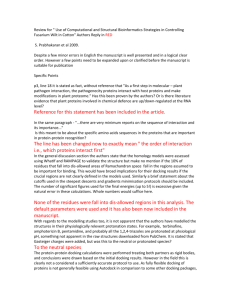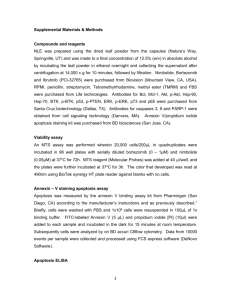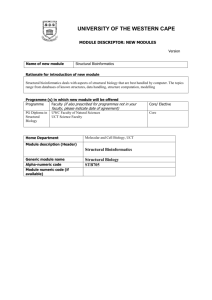DIRECT SHIPMENT VS. CROSS DOCKING 1. Introduction
advertisement
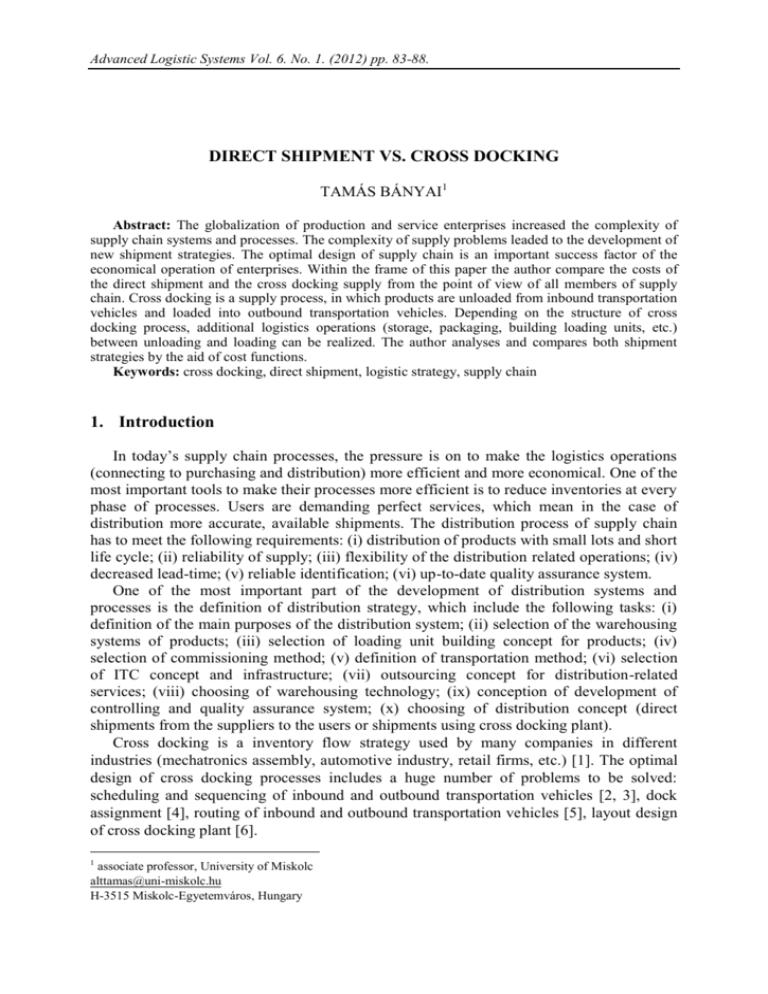
Advanced Logistic Systems Vol. 6. No. 1. (2012) pp. 83-88. DIRECT SHIPMENT VS. CROSS DOCKING TAMÁS BÁNYAI1 Abstract: The globalization of production and service enterprises increased the complexity of supply chain systems and processes. The complexity of supply problems leaded to the development of new shipment strategies. The optimal design of supply chain is an important success factor of the economical operation of enterprises. Within the frame of this paper the author compare the costs of the direct shipment and the cross docking supply from the point of view of all members of supply chain. Cross docking is a supply process, in which products are unloaded from inbound transportation vehicles and loaded into outbound transportation vehicles. Depending on the structure of cross docking process, additional logistics operations (storage, packaging, building loading units, etc.) between unloading and loading can be realized. The author analyses and compares both shipment strategies by the aid of cost functions. Keywords: cross docking, direct shipment, logistic strategy, supply chain 1. Introduction In today’s supply chain processes, the pressure is on to make the logistics operations (connecting to purchasing and distribution) more efficient and more economical. One of the most important tools to make their processes more efficient is to reduce inventories at every phase of processes. Users are demanding perfect services, which mean in the case of distribution more accurate, available shipments. The distribution process of supply chain has to meet the following requirements: (i) distribution of products with small lots and short life cycle; (ii) reliability of supply; (iii) flexibility of the distribution related operations; (iv) decreased lead-time; (v) reliable identification; (vi) up-to-date quality assurance system. One of the most important part of the development of distribution systems and processes is the definition of distribution strategy, which include the following tasks: (i) definition of the main purposes of the distribution system; (ii) selection of the warehousing systems of products; (iii) selection of loading unit building concept for products; (iv) selection of commissioning method; (v) definition of transportation method; (vi) selection of ITC concept and infrastructure; (vii) outsourcing concept for distribution-related services; (viii) choosing of warehousing technology; (ix) conception of development of controlling and quality assurance system; (x) choosing of distribution concept (direct shipments from the suppliers to the users or shipments using cross docking plant). Cross docking is a inventory flow strategy used by many companies in different industries (mechatronics assembly, automotive industry, retail firms, etc.) [1]. The optimal design of cross docking processes includes a huge number of problems to be solved: scheduling and sequencing of inbound and outbound transportation vehicles [2, 3], dock assignment [4], routing of inbound and outbound transportation vehicles [5], layout design of cross docking plant [6]. 1 associate professor, University of Miskolc alttamas@uni-miskolc.hu H-3515 Miskolc-Egyetemváros, Hungary 84 Direct shipment vs. cross docking 2. Direct shipment and cross docking The just in time and just in sequence purchasing makes it possible to reduce the inventory in the whole supply chain. The decreasing of inventory includes the decreasing of lots, reduction of disposition levels, increasing of quality of prognosis and disposition, reliable supply of spare parts, reduction of storage and production levels. These purposes are influenced by the supply chain strategy, which is based either on direct or indirect supply [7, 8]. In the case of direct supply the products are directly transported from the point of origin (product owner or supplier) to the users (Fig. 1). The user orders the products directly from the suppliers. Supplier1 Supplier2 ... Supplierm User1 User2 ... Usern Fig. 1. Direct shipment In the case of cross docking supply (Fig.2) the shipments are transferred through a cross docking plant (with or without storing). The advantages of cross docking supply can summarized as follows [9]: streamlines the material flow from the point of production of product to the point of sale; reduces the material handling cost, operation cost and decrease the inventory; reduces the warehousing costs. The dynamic design of supply system makes it possible to manage the crisis situations of the logistics system [10]. Supplier1 Supplier2 ... Supplierm CROSS DOCKING User1 User2 ... Usern Fig. 2. Cross docking The most important operations from the suppliers to the users are the receiving inbound vehicles at the receiving docks of cross docking plant, sorting of products in the store area and shipping outbound vehicles from the shipping dock of the cross docking plant to the users. In the case of single stage cross docking plant the product are staged in zones corresponding to the shipping docks and in the case of multi-stage cross docking plant the products are staged in different zones corresponding to the receiving and shipping docks and are sorted in between. Tamás Bányai 85 3. Modeling of direct shipment and cross docking The modeling of supply chain processes is a quite wide area of research. The production and service enterprises are able to develop or improve their systems and processes by the aid of suitable sophisticated models, which make it possible to analyze the effects of different decisions (operational, tactical or strategical level). The material flow from suppliers to users can be described by the aid of material flow matrixes. In the case of direct shipment one matrix can describe the material flow: [ ], i=1..m, j=1..n, f=1..r, (1) where is the required material flow from the i-th supplier to the j-th user in the case of the f-th product type. The scheduling of the material supply is determined by the scheduling matrix as follows: [ ]. (2) The required material flow in the case of direct shipment from the i-th supplier to the jth user within the frame of the -th time period can be defined with the ∑ (3) formula and in the case of f , where is the set of scheduled request time within the frame of the period. The warehousing cost of direct shipment depends on the amount of products, the warehousing time and the specific warehousing cost. If the required products are produced at the beginning of the analysis interval and are stored in the warehouse of the suppliers, then the warehousing cost can be calculated as follows: ∑∑∑∑ (4) and in the case of f , where is the specific warehousing cost of the f-th product of the i-th supplier, is the number of time periods from the beginning of the analysis and the production of the product and is the length of one time period. The volume of the required material flow in the case of direct shipment from the i-th supplier to the j-th user within the frame of the -th time period can be defined with the ∑ (5) where is the specific transportation volume of the f-th product, which can be weighted by other parameters of the products (weight). By the aid of this formula the transportation cost from the suppliers to the users depending on the length of routes and transportation capacities of vehicles can be defined as follows: 86 Direct shipment vs. cross docking ∑∑ ∑ ( ) (6) where RoundUp is the function of round up a real number up to the next integer, is the specific transportation cost of the direct shipment from the i-th supplier to the j-th user and is the loading capacity of the transportation vehicle. The loading and unloading cost of direct shipment can be defined by the aid of the following formula: ∑∑ ∑ ( ) , (7) where is the specific loading and unloading cost of products to be transported from the i-th supplier to the j-th user, is the standard cost of the loading machines of the supplier for every vehicles, and is the standard cost of the loading machines of the users. In the case of cross docking the material flow can be divided into two phases. The first phase represents the material flow from the suppliers to cross docking plant, and the second phase describes the material flow from the cross docking plant to the users: [ ] [ ], (8) where is the inbound material flow from the i-th supplier to the cross docking plant and the material flow from the cross docking plant to the j-th user in the case of the fth product type. The scheduling of the material supply is the same as in the case of direct supply, so [ ]. (9) In the case of cross docking supply the transportation cost has two parts: the transportation of products from the supplier to the cross docking plant and the transportation from the cross docking plant to the users. The transportation of products from the suppliers to the cross docking plant can be realized on the base of two different strategies: (i) all required products are transported at the beginning of the analysis (after production); (ii) the required products are transported in more phases. In the first case the transportation cost can be determined as follows: ∑ ( ∑ ) ∑ , (10) where RoundUp is the function of round up a real number up to the next integer, is the specific transportation cost of the direct shipment from the i-th supplier to the cross docking plant and is the loading capacity of the transportation vehicle of the i-th supplier. If the required products are transported in more phases, then Eq.(10) can be used for every phases, but in the case of summarizing the amount of different product (f=1..r) the condition has to be taken into consideration. Tamás Bányai 87 The volume of the required material flow in the case of cross docking supply from the cross docking plant to the j-th user within the frame of the -th time period can be defined with the following equation: ∑ (11) and in the case of summarizing the amount of different product (f=1..r) the condition has to be taken into consideration. The transportation cost from the cross docking plant to the users can be calculated by the aid of the following equation: ∑ ∑ ( ) (12) where is the length of route from the cross docking plant to the j-th user, and is the specific transportation cost from the cross docking plant to the j-th user. The unloading cost of cross docking supply can be defined by the aid of the following formula: ∑( ∑ ) (13) where is the specific unloading cost of products to be transported from the cross docking plant to the j-th user. If all required products are transported at the beginning of the analysis, then the loading cost of cross docking supply can be defined by the aid of the following formula: ∑( ∑ ) (14) The warehousing cost depends on the specific warehousing cost. The total cost of the direct supply depends on the transportation cost, loading cost and the warehousing cost: . (15) The total cost of the cross docking supply depends on the transportation cost, loading and unloading cost and the warehousing cost: . (16) The above mentioned model makes it possible to analyze the cost effects of direct shipment and cross docking supply. By the aid of this cost model the supply chain developer are able to choose the better solution for the distribution processes. The analysis of the above mentioned supply models is very important, because the huge number of influence factors makes ambiguous the effect of the shipment model on the whole logistic system. 88 Direct shipment vs. cross docking 4. Summary The design and operation of logistics systems of networked companies requires more and more sophisticated methods and models. The complexity of globalised logistics systems leaded to the appearance of new supply chain solutions. Within the frame of this paper the author shows two possible models of supply processes: the first model represents the direct shipment and the second one describes the cross docking supply. The models are based on cost function including the costs of transportation, warehousing, loading and unloading operations. Acknowledgements This research was carried out as part of the TAMOP-4.2.1.B-10/2/KONV-2010-0001 project with support by the European Union, co-financed by the European Social Fund. Literature [1] Belle, J.V.; Valckenaers P.; Cattrysse D.: Cross-docking: State of the art, Omega 40 (2012) pp. 827-846 doi: 10.1016/j.omega.2012.01.005, 2012. [2] Liao, T. W.; Egbelu, P. J.; Chang P. C.: Two hybrid differential evolution algorithms for optimal inbound and outbound truck sequencing in cross docking operations. Applied Soft Computing, Volume 12, Issue 11, pp. 3683-3697 doi: 10.1016/j.asoc.2012.05.023, 2012 [3] Yu, W.; Egbelu, P. J.: Scheduling of inbound and outbound trucks in cross docking systems with temporary storage. European Journal of Operational Research, Volume 184, Issue 1, pp. 377396. doi:10.1016/j.ejor.2006.10.047, 2008. [4] Liao, T. W.; Egbelu, P. J.; Chang P. C.: Simultaneous dock assignment and sequencing of inbound trucks under a fixed outbound truck schedule in multi-door cross docking operations. International Journal of Production Economics, In Press, Corrected Proof. doi: 10.1016/j.ijpe.2012.03.037, 2012. [5] Lee, Y. H.; Jung, J. W.; Lee K. M.: Vehicle routing scheduling for cross-docking in the supply chain. Computers & Industrial Engineering, Volume 51, Issue 2, pp. 247-256 doi:10.1016/j.cie.2006.02.006, 2006. [6] Vis, I. F. A.; Roodbergen, K. J.: Layout and control policies for cross docking operations. Computers & Industrial Engineering, Volume 61, Issue 4, pp. 911-919 doi:10.1016/j.cie.2011.06.001, 2011. [7] Szabó, A. A.; Bányai, Á.; Illés, B.: Importance of total cost ownership concept int he corporate sourcing practice. Advanced Logistic Systems: Theory and Practice 5. pp. 204-208, 2011. [8] Bányai, Á.: Optimisation of intermediate storage network of JIT purchasing. Advanced Logistic Systems: Theory and Practice 5. pp. 35-40, 2011. [9] Bartholdi, J. J.; Gue, K. R.: The Best Shape for a Crossdock Transportation Science. Volume 38, Issue 4, pp. 235-244 doi:10.1287/trsc.1030.0077, 2004. [10] Kerepeszki, I.; Gubán, M.; Gubán, Á.: Crisis management through logistics. In: Majoros, P. (ed.) Proceedings of Budapest Business School. Budapest. 2010. pp. 57-68. ISBN:978-9637139-36-7
